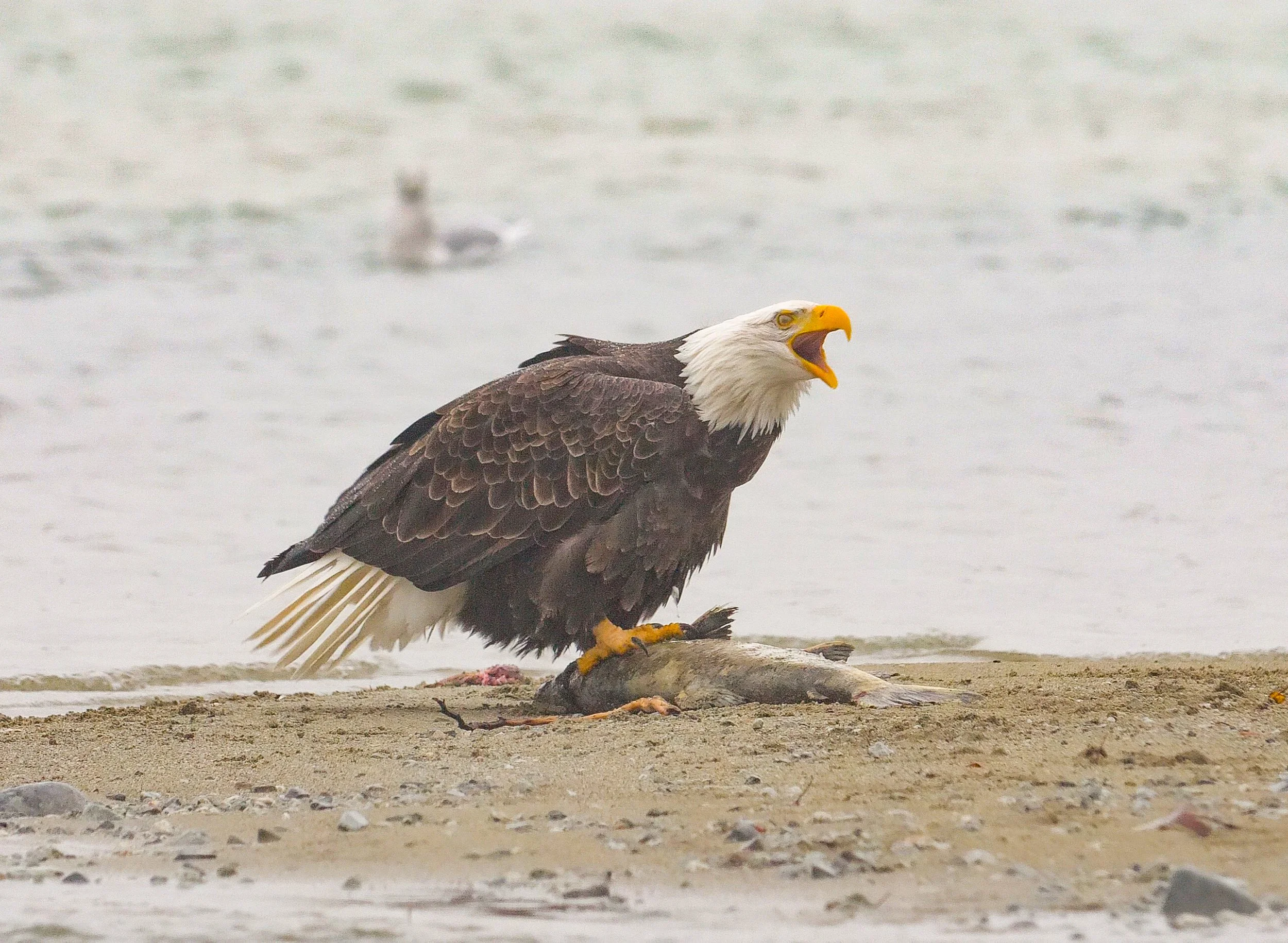Bald Eagle Facts
The bald eagle (Haliaeetus leucocephalus) is an iconic species and has been the United States’ national bird since 1782. This majestic raptor can be found throughout the United States and Canada and in parts of northern Mexico. In Washington State, the wintering bald eagle population, which includes resident breeders and seasonal migrants, is growing and has been estimated to eventually reach a steady state at 6,000 birds.
Western Washington has the largest population of bald eagles in the Pacific Northwest. These opportunistic raptors hunt and scavenge, often feeding on salmon and other fish, and even sea birds (Middleton et al., 2018; Henson et al., 2019). Their excellent eyesight and aerodynamic body allows them to spot, and drop-in on prey from 1,000 feet in the air. In the early twentieth century, bald eagles were once regarded as vermin and a threat to livestock.
During this time their populations dramatically declined due to hunting, poisoning, and the shell-thinning effects of now-illegal insecticides like DDT (Stinson et al., 2007). When DDT was banned in the U.S. in 1972 and protections were set in place to reduce persecution and protect habitat, eagle populations rebounded.The recovery of bald eagles is now considered a great conservation success story.
DID YOU KNOW
A bald eagle has an average wingspan of 6 feet (2m)! These massive wings have finger-like gaps in their feathers to allow for excellent precision maneuvering through the air.
An eagle’s talons are among the strongest in the bird world. They use these long, sharp talons to hunt and catch fish as they swoop across the water, often holding multiple forage fish at a time.
Bald eagles are thought to live over 20 years. Scientists followed one banded eagle that lived to at least 28 years.
Bald eagles aren’t born with their distinctive white head. Their plumage (feather patterns) change throughout their youth. Each year from spring to fall, the eagle molts (sheds) all of its feathers, replacing old feathers with new ones. The feather patterns gradually change with age. Bald eagles acquire their distinctive adult plumage and white head by 5 years of age.
In the Salish Sea, bald eagles are known predators of sea birds. Even the sea birds know it! Sea birds alter their behavior in the presence of bald eagles.
Bald eagle populations have been increasing and the species is currently listed by the International Union of Concerned Scientists (IUCN) as “Least Concern,” however, habitat loss and degradation of suitable nesting sites from urbanization is still a threat to their survival.

